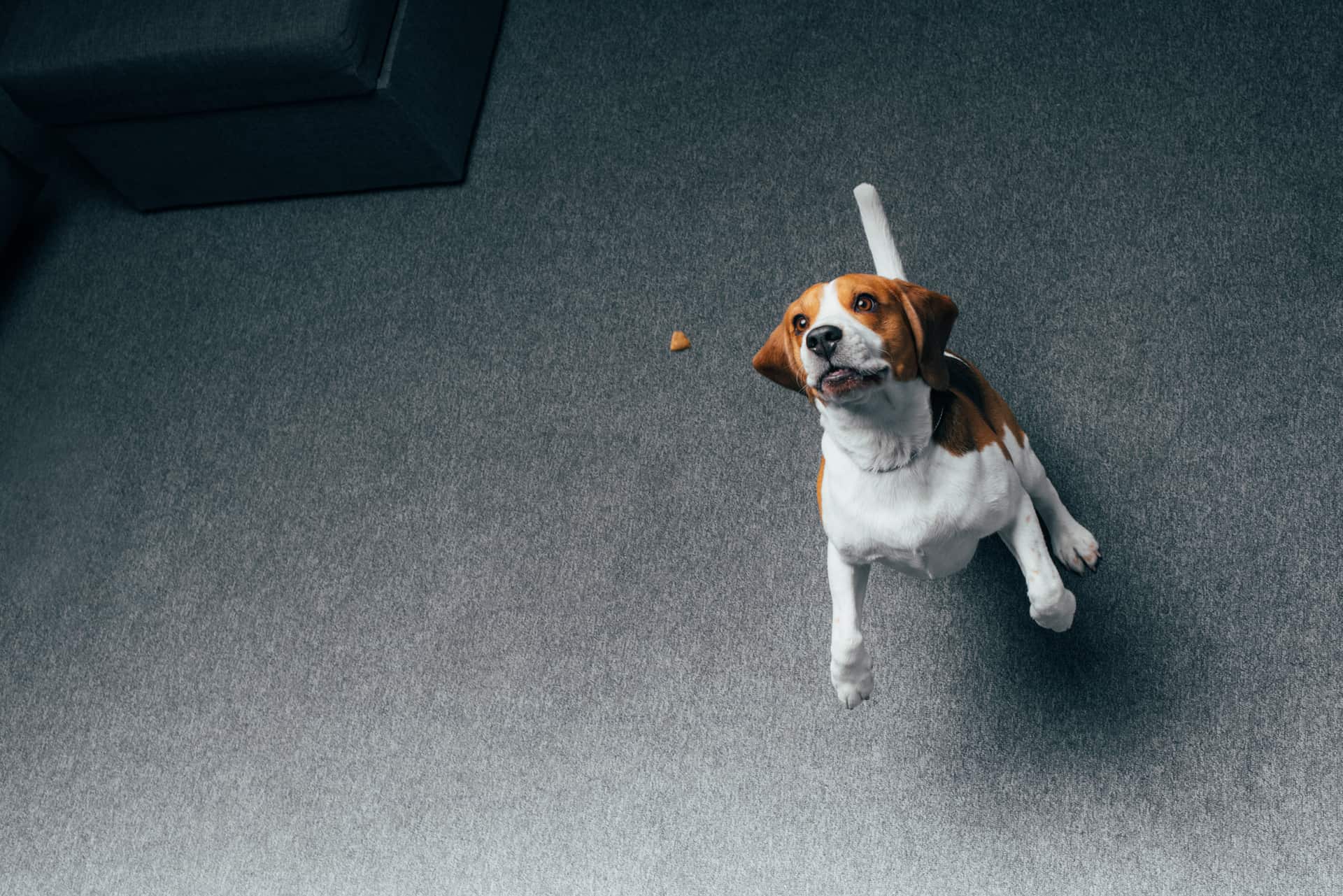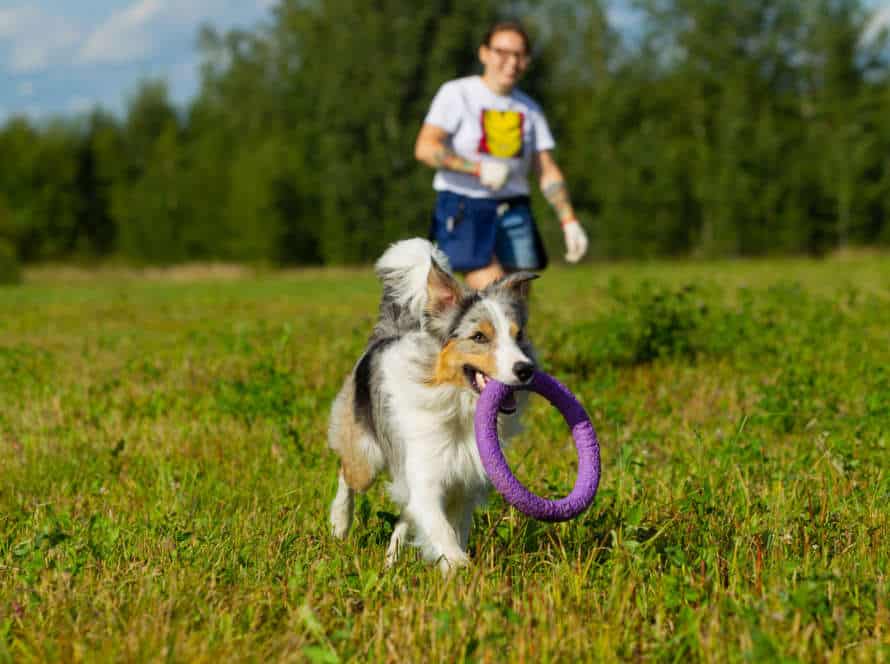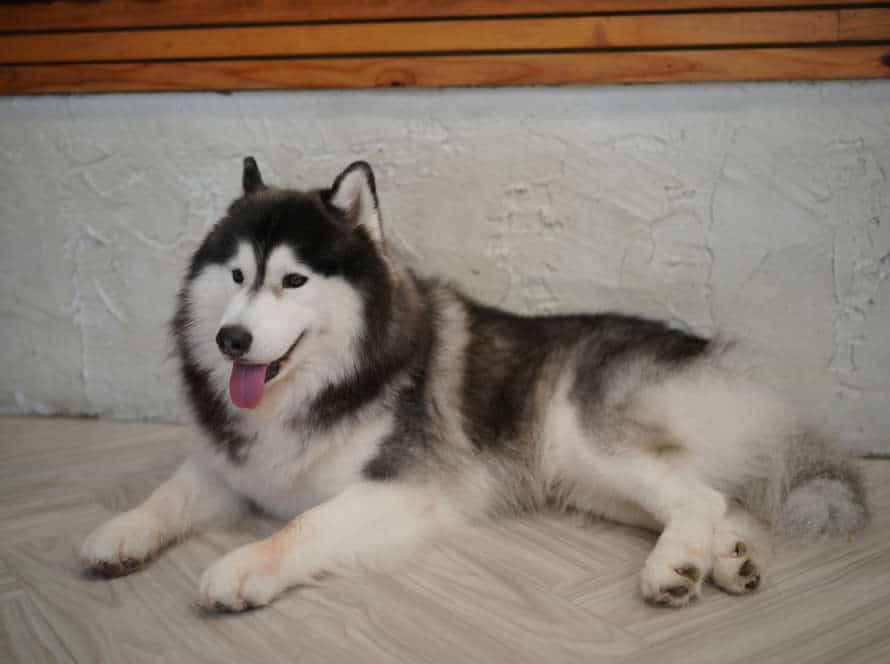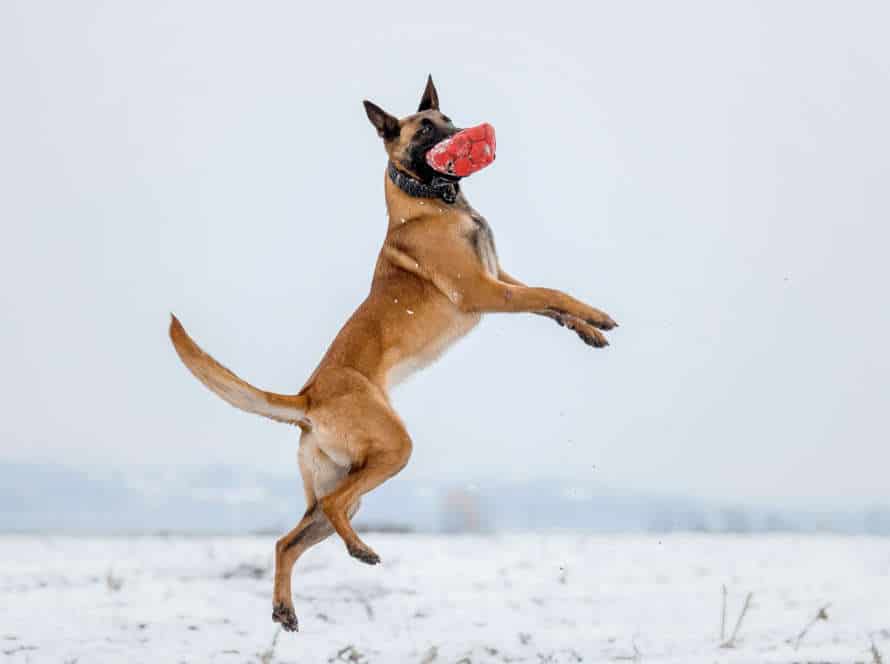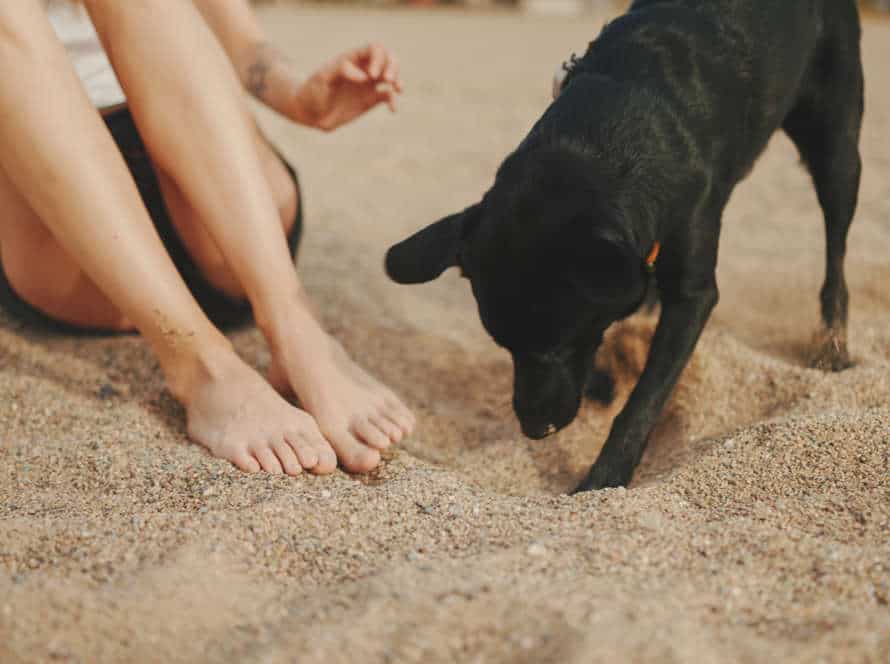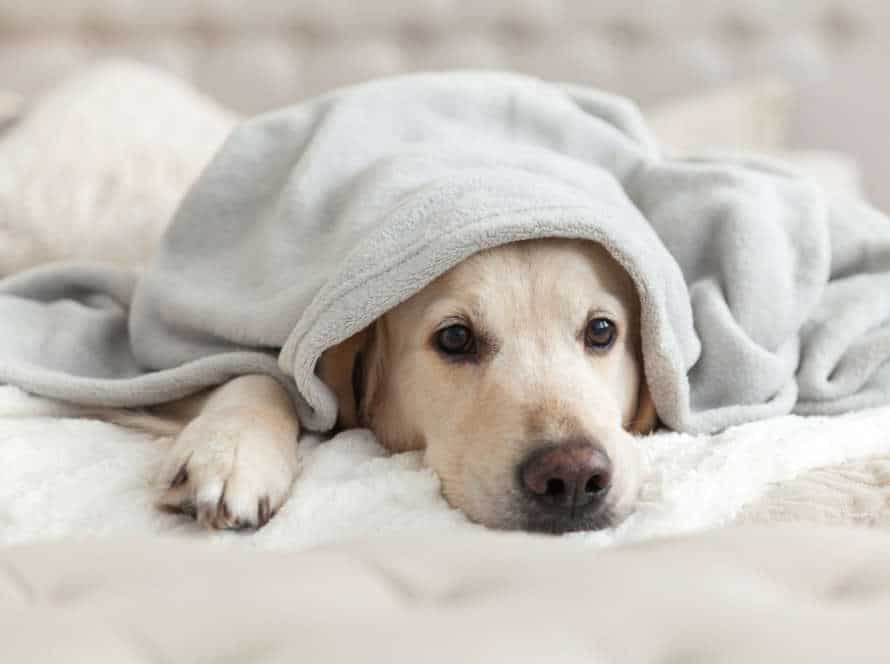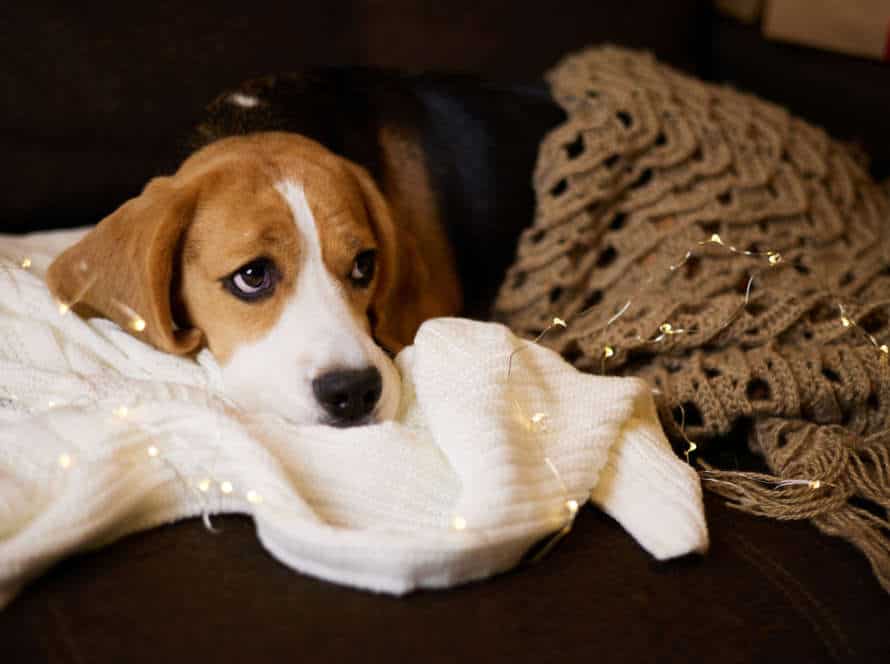Puppy Training: Stopping Jumping Problems Before They Start
Puppies like to jump, however it can be a problem when they get older. To stop this, start training your pup early.
Here are some tips:
- Be clear and consistent. Use the same word – such as “off” – for the action you want.
- Teach alternative behavior, like sitting or staying, instead of jumping.
- Reward good behavior. Praise and give treats or affection when your pup greets people politely.
- Don’t encourage jumping in play.
- Train your pup positively and consistently to form good habits and prevent jumping issues.
Understanding Puppy Jumping
Puppy jumping is frequent among pet owners. It’s stressful for pup and owner. Fortunately, you can stop it before it gets out of hand.
Let’s explore why puppies jump and how to train them to stop! Knowing why your pup jumps is key. Then, use the correct steps to end the behavior.
Why do puppies jump?
Jumpin’s a natural behavior for puppers – it’s their way of expressin’ excitement and greetin’ their owners. But, it can become a problem if it’s not addressed early on. Here’re the reasons why puppers jump and how to tackle it:
- Attention-Seekin’: Puppers will jump on owners to get attention.
- Playful: Puppers jump outta excitement ‘n playfulness.
- Habit: If the puppy’s rewarded for jumpin’ early, it could become a habit.
Train your pup early on to prevent jumpin’ problems. Here’re some tips:
- Teach ’em the “sit” command ‘n reward ’em when they obey.
- Use positive reinforcement techniques, like treats ‘n praise, to train ’em.
- Be consistent in ya trainin’ and avoid rewardin’ jumpin’ behavior.
By followin’ these basic tips, you can make sure yer pup learns the right behavior ‘n avoids bad habits!
The repercussions of puppy jumping
Puppy jumping is frequent with young dogs, but it can have serious consequences if not managed early. If your pup jumps on people, furniture or other items often, they may develop bad habits that are tough to correct.
The repercussions of puppy jumping include:
- Risk of injury – A jumping puppy can scratch or knock over children, elderly or those with medical conditions.
- Damaged clothing – Jumpy puppies can damage clothing and furniture by causing rips, tears, and stains.
- Bad socialization – If a puppy jumps on strangers, it can make them uncomfortable, making them avoid your pup. This could lead to inadequate socialization.
To prevent the problems above, it’s vital to take steps to stop puppy jumping before it becomes a habit. A well-trained puppy is a happy one!
How to communicate with puppies and set realistic expectations
Communicating and setting expectations with puppies is important. To prevent jumping problems, here are tips:
- Start training your pup early.
- Reward your pup only when all four paws are on the ground.
- Teach your pup simple commands like “sit” and “stay“.
- Use treats and praise to reinforce good behavior.
- Set rules and boundaries and make sure everyone knows them.
Remember, jumping is natural for puppies. But, with the right training and communication, you can stop it from becoming an issue.
Training Techniques to Stop Puppy Jumping
Puppy jumping can be tricky to stop. However, training your pup with some key techniques could prevent it from happening. The reason they jump is usually due to excitement or seeking attention. You can use training to have them focus on behaviors that are acceptable. This article talks about the most successful methods for controlling jumping.
Basic commands to stop jumping
Puppies naturally jump, but it can be a problem when they grow up. Use positive reinforcement and redirection to stop them from jumping. Here are three commands to help:
- Say “off” in a firm voice when the puppy jumps. Then, give them a toy or treat to distract them.
- Teach them to sit and reward them with a treat or praise when they do it. Reinforce this before greeting or petting them.
- Ask them to sit and wait, before giving them a treat or allowing them to jump up.
Be consistent and avoid reinforcing negative behavior, like jumping. Practice these commands often to teach them proper behavior. Be patient.
Using positive reinforcement to discourage jumping
Using positive reinforcement is a great way to stop puppies from jumping. Dogs usually jump to get attention or physical contact with their owners. With consistent training and positive reinforcement, this behavior can be changed.
Here are some tips:
- Ignore the puppy when it jumps and turn away.
- Praise and reward with a treat or verbal encouragement when the puppy has all four paws on the ground.
- Teach an alternative behavior, like sitting or lying down. Reward when they do it instead of jumping.
- Be consistent with your training. Reward every time the desired behavior is shown.
With patience and consistency, the puppy will learn that jumping is not the behavior to get attention.
Correcting jumping behavior when it occurs
Puppy jumping can be controlled with some training strategies. To stop it, try these tips:
- Don’t give attention when your pup jumps up. Walk away or turn away.
- Train your pup to sit or lie down when greeting people instead of jumping.
- Give rewards for good behavior, like obeying commands.
- Everyone must use the same training techniques.
Early training is key. If you start early, you can avoid problem behavior. So, train your pup and reward good behavior.
Preventing Future Jumping
Puppy jumping? A tough one to tackle! Prevention is the key. Reward good behavior, not punish bad! Establish boundaries and expectations early for the best start. That’s the way to go!
Consistency in training
Consistency is essential when training a pup and avoiding future jumping issues. Establishing a strong basis of good behavior early on in your pup’s life is critical for their growth and behaviour as an adult dog.
Here are some tips for staying consistent with your pup’s training, to prevent jumping issues before they start:
- Set definite limits and regulations for your pup’s behaviour.
- Reward good behaviour with positive reinforcement techniques, such as treats or verbal praise.
- Be lenient and understanding with your pup as they learn and develop.
- Turn training into a daily ritual and remain consistent.
- Set achievable goals and anticipations for your pup’s training progress.
Regularity in your training will provide a content, obedient pup and a peaceful home.
Importance of proper socialization
Socializing puppies properly is essential to avoiding jumping issues in the future. This process involves introducing your pup to new people, animals, and surroundings in a safe and positive way. Here are the benefits of proper socialization for curtailing jumping issues:
- Forming positive connections: Socializing allows puppies to make a connection to people and situations which reduces anxiety and jumping caused by fear.
- Establishing impulse control: Through varied experiences, puppies learn to restrain their impulses and adjust to novel events. This helps to minimize their jumping.
- Strengthening your relationship: Socializing helps build a strong bond between you and your pup, strengthening your trust and obedience. This makes it easier to train them to stop jumping.
By investing time in proper socialization, you can avoid future jumping problems and build a healthy relationship with your pup.
Exercises to reinforce good behavior
Pups love to jump, but it can cause trouble if left unchecked. There are some exercises to help you keep them from getting too wild.
- Teach ‘Sit’ & ‘Stay’: These commands help reduce jumping.
- Praise & Reward: Give treats or praise when they act nice.
- Leash Control: Use a leash at all times, indoors and out.
- Don’t Encourage Jumping: Don’t give them attention when they jump.
- Redirect: If they jump on you, give them a toy or treat to focus on.
Do these exercises to help your pup stay in line.
Additional Tips and Tricks
Puppy training can be tricky. So, it’s important to start off on the right foot! If you wanna nip jumping in the bud, we’ve got some tips. Check out these puppy training tricks— they’ll help you get the best results!
Knowing when to seek professional help
Puppy training can be tough, but also a great experience for new dog owners. There’re times when getting help from an expert is needed to solve behavioral problems. Here’re signs that it’s time to ask a pro for help:
- Your pup is harming themselves or others around them.
- They display aggression to people and other animals.
- Training methods don’t work on them.
- They’re anxious and cause destruction.
Remember, seeking help at the start can help you and your pup have a better relationship. Tip – Good socialization can prevent many unwanted behaviors that make you seek professional help. Start early and ensure your pup has nice experiences with different people, animals and environments.
Avoiding common mistakes in jump training
Jump training can boost your athletic performance. But, to prevent injury and setbacks, here are some tips:
- Start small and build up. Don’t push it too far, too soon.
- Make sure your form and technique are correct. Jumping with locked knees or rounded back can cause harm.
- Don’t forget rest and recovery. Too much training can lead to burnout and slow progress.
- Don’t neglect strength training. It helps improve jump height and minimizes injury risk.
When it comes to puppy training, it’s vital to reward good behavior and offer treats/praise. Also, redirect bad behavior like jumping on people. Show alternatives such as sitting or lying down. With patience and persistence, you can train your puppy to be obedient.
Keeping a realistic timeline for success
Training your pup? Keep realistic expectations! Some pups learn quicker than others. Create a plan and stay patient. Here are some tips to help stop jumping issues:
- Train pup early—prevent jumping from becoming a habit.
- Reward pup with treats and praise when they stay calm and don’t jump.
- Teach pup alternative behaviors such as sitting or staying in place.
- Use positive reinforcement—avoid punishments, as they may make jumping worse.
Every pup’s different. Stay composed, be patient, and be consistent for success.
Frequently Asked Questions
Q: Why do puppies jump on people?
A: Puppies jump on people out of excitement or to get attention. It is a natural behavior, but it can become a problem if not dealt with properly.
Q: How can I stop my puppy from jumping on people?
A: You can stop your puppy from jumping on people by teaching them an alternate behavior, like sitting, and rewarding them for it. Consistency is key.
Q: Will punishment help stop my puppy from jumping on people?
A: Punishment is not an effective way to stop a puppy from jumping. It can actually make the problem worse by increasing anxiety and fear.
Q: Can I teach an old dog not to jump on people?
A: Yes, you can teach an older dog not to jump on people. It may take longer, as the behavior is more ingrained, but it is possible with patience and consistency.
Q: Is it okay to let my puppy jump on some people and not others?
A: No, it is not okay to let your puppy jump on some people and not others. This can confuse your puppy and reinforce the behavior when you don’t want it.
Q: When is the best time to start training my puppy not to jump?
A: The best time to start training your puppy not to jump is as soon as they come home. Consistent training and reinforcement will prevent jumping problems before they start.

